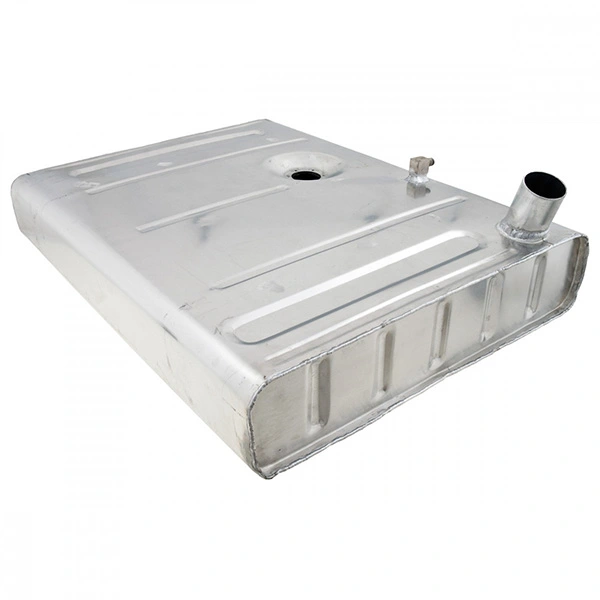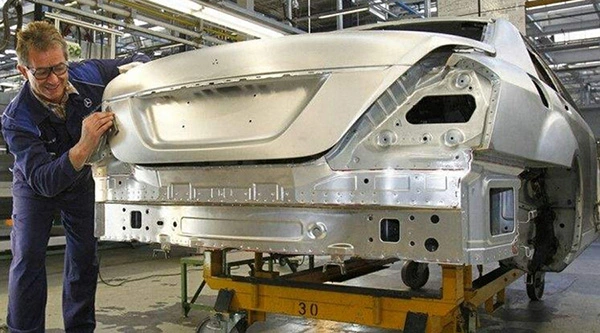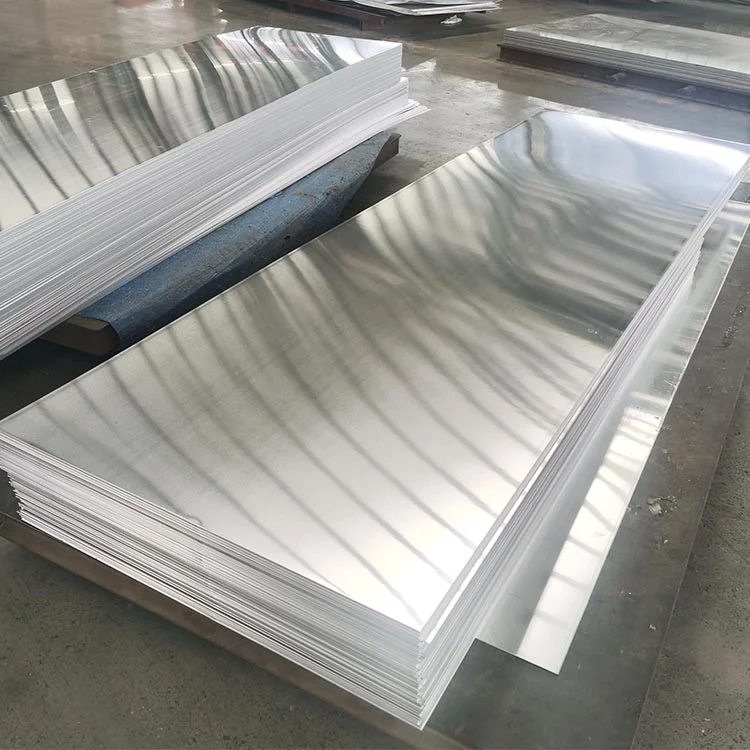
Yongsheng 6000 Series Aluminium Sheet 导言
6000 series aluminium sheet alloys are mainly composed of aluminium (Al) as the main element and magnesium (Mg) and silicon (Si) as the main alloying elements. The mechanical properties of 6000 series aluminum sheets depend on alloy composition, tempering process, heat treatment and other factors. In general, these alloys exhibit good tensile strength, elongation, and yield strength. The thermal conductivity of 6-series aluminum alloys is generally high, ranging from 150 to 200 W/m K, and the electrical conductivity is about 30% to 40% of the International Annealed Copper Standard (IACS). The hardness of the 6-series aluminium alloys may vary depending on the tempering process and alloy composition. Generally, it is available in a range of hardness values from relatively soft to moderately hard, allowing relative flexibility in a variety of applications. This type of aluminum plate is usually very strong and can withstand huge loads and pressures.
Yongsheng can provide various 6000 series aluminium alloys, including 6005, 6061, 6063, 6082 and so on.
How Is 6000 Series Aluminum Made
Melting: The aluminum ingot is melted into aluminum water at high temperature in the furnace, and becomes molten alloy after cooling.
Casting: Casting molten aluminum alloy into the desired shape or form. The most common casting methods include permanent mold casting, die casting or continuous casting, depending on the specific application and requirements.
Heat treatment: Two common heat treatment processes are solution heat treatment and aging treatment. Solution heat treatment involves heating an alloy to a specific temperature and then rapidly cooling it (quenching) to stabilize the solid solution. Aging, also known as precipitation hardening, is the process of reheating the alloy to a lower temperature to allow the formation of strengthening precipitates within the aluminum matrix.
Cold working: After heat treatment, aluminum can be further processed through cold working techniques such as rolling, extrusion or forging. These processes involve deforming the material at room temperature to improve its mechanical properties, including strength and hardness.
Finishing operations: The final step involves finishing operations such as cutting, machining, surface treatment (such as anodizing or painting) and quality inspection to meet the specific requirements of the intended application.

Unique Advantages Of 6000 Series Aluminium Sheets
The 6000 series aluminium sheet has unique advantages that are different from the 1000 series aluminum sheet, 3000 series aluminum sheet, 5000 series aluminum sheet and other series of aluminum plates.
| SERIES NUMBER | ADVANTAGES | REPRESENTATIVE ALLOY |
| 1000 series aluminium | High purity at an affordable price | 1050,1060,1100 |
| 2000 series aluminium | High hardness | 2A16,uncommonly used |
| 3000 series aluminium | Anti-rust aluminum plate, the price is higher than 1xxx aluminum | 3003,3004,3105 |
| 4000 series aluminium | high silicon content | 4A01 |
| 5000 series aluminium | Aluminum-magnesium alloy, low density, high tensile strength, high elongation | 5052,5005,5083,5754 |
| 6000 series aluminium | Magnesium-silicon alloy, strong, corrosion-resistant, weldable, and coatable | 6061,6063 |
| 7000 series aluminium | Aluminum-magnesium-zinc-copper alloy, heat treatable, superhard and wear-resistant | 7075 |
| 8000 series aluminium | Lightweight, durable and high performance | 8011,8021,8079,8006,1235 |
Compared with 1000 series aluminium sheet, 6000 series aluminium plate has higher strength. It forms alloys with elements such as magnesium and silicon, which help enhance its mechanical properties. This makes it suitable for structural components in the aerospace, automotive and marine industries; compared to some other high-strength aluminum alloys, 6000-series aluminum sheet offers a good balance of performance and cost-effectiveness without creating excess material cost.
6000 series aluminium sheet can be easily welded using a variety of techniques such as MIG welding, TIG welding and resistance welding. Although not as corrosion resistant as the 5000 series aluminium sheets, the 6000 series still has good atmospheric corrosion resistance. Its alloying elements provide a protective oxide layer on the surface that helps prevent corrosion in most environments. However, for more severe corrosive conditions, additional protective coatings or treatments may be required. 6000 series aluminum plate can also be used for cutting, drilling, milling and turning operations. It produces small chips during machining, resulting in better chip control and reduced tool wear.
One of the outstanding advantages of 6000 series aluminium sheet is its heat treatability. It can be subjected to various heat treatments, such as solution heat treating and precipitation hardening, allowing manufacturers to tailor the strength and hardness of the material to specific application requirements.
6000 Series Aluminium Strength Description
Common alloying elements in 6000 series aluminum alloys include silicon, magnesium and manganese. The addition of these elements can improve the tensile strength and corrosion resistance of the alloy. This series generally has medium to high strength levels to meet many structural and engineering requirements. Generally, 6xxx aluminum is further enhanced by heat treatment processes, including aging treatment (T4, T5, T6) and artificial aging treatment (T7, T8). Of course, the 6000 series aluminum alloy can also be processed by cold deformation, such as rolling, extrusion and drawing, etc., and has high toughness.
Main Grades Of 6000 Series Aluminium
6005 Aluminum Sheet
6005 铝板 具有中等强度、高韧性和可焊性,适用于各种结构应用。合金成分中含有硅和镁,可提高强度并改善成型性。此外,6005 铝板易于挤压,可生产复杂的形状和型材。
从应用角度来看,6005 铝板广泛应用于建筑、运输、汽车等行业。它兼具强度和可成形性,是建筑和桥梁中梁、柱和桁架等结构部件的理想材料。挤压复杂型材的能力可为运输业生产轻质耐用的部件,包括栏杆、框架和车身面板。在汽车行业,6005 铝板可用于制造底盘部件、热交换器和车身加固件。永盛 6005 铝板常用于制造油箱/管道、运输车辆/船舶的钣金件等。

6061 铝板
6061 铝板 是一种可靠的多功能材料,适用于要求高强度、可成形性和耐腐蚀性的应用。
6061 铝板通常用于框架、横梁和支架等结构部件。6061 铝板因其耐盐水腐蚀的特性,还可用于船体和甲板等船舶应用。它还可用于电器外壳、散热器和其他电子元件。总之,6061 铝板是一种多功能材料,易于加工和焊接,是定制设计和原型制作的理想材料。永盛 6061 铝经常用于手机卡槽、手机外壳、模具、汽车、掩膜机、精密加工等。
6063 铝板
6063 铝板 以其出色的成型性、耐腐蚀性和导热性而著称。它具有良好的表面光洁度,易于阳极氧化或喷漆,因此非常适合装饰性应用。它还具有良好的导电性和非磁性,因此适用于电气应用。
6063 铝板广泛用于汽车底板、卡车轮毂、手机外壳、精密模具等。由于其出色的表面光洁度和阳极氧化能力,它还可用于装饰性应用,如饰件和模制件。

6082 铝板
6082 铝板 具有高强度、可塑性和耐腐蚀性。它是一种可热处理的合金,可以通过热处理得到强化,因此非常适合需要高强度的结构应用。
6082 铝板广泛应用于工业、汽车和建筑行业。永盛 6082 铝经常用于手机、相机镜头、工业模具等。在汽车行业,用于发动机部件、悬挂部件和其他结构部件。在建筑行业,它被用于梁、柱、桁架等结构部件以及屋顶和覆层。此外,由于 6082 铝板具有耐盐水腐蚀的特性,因此常用于航海领域。它还用于生产高压容器、热交换器等。
常见问题:
什么是最坚固的 6000 系列铝材?
在 6000 系列铝合金中,强度最高、最常用的是 6061 铝合金。它具有良好的强度、可成形性和可焊接性,适用于各种应用。它在退火状态下的抗拉强度约为 45,000 磅/平方英寸(310 兆帕),并可通过沉淀硬化等热处理工艺进一步强化,例如 6061-T6 铝 退火状态。6000 系列中的其他高强度合金包括 6005、6063 和 6082,每种合金的性能和应用都略有不同。
6000 系列铝材在焊接时会降低强度吗?
焊接 6000 系列铝时,其强度可能会降低,尤其是在焊缝附近的热影响区 (HAZ)。这是因为焊接过程会产生热量,从而影响材料的微观结构和机械性能。沉淀硬化合金(如 6061)焊接过程中可能出现的一个常见现象是在热影响区形成一个软化区,称为 "金块区"。与母材相比,该区域的强度通常较低。不过,焊后热处理(如人工时效)可用于恢复甚至提高焊缝和邻近区域的强度。
什么是最坚硬的铝材?
就韧性而言,7000 系列铝合金通常被认为是最坚硬的。7000 系列合金以其高强度和出色的抗疲劳性著称,适用于航空航天、国防和体育等行业的苛刻应用。7xxx 系列铝中的 7075 铝合金被称为强度最高的铝合金之一。


